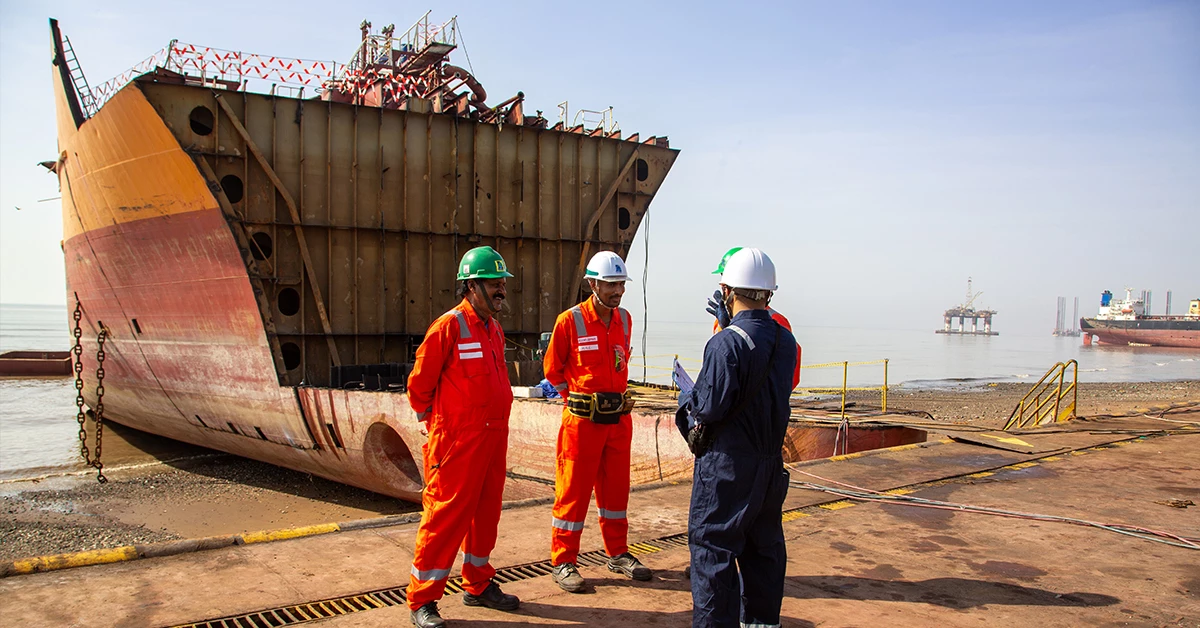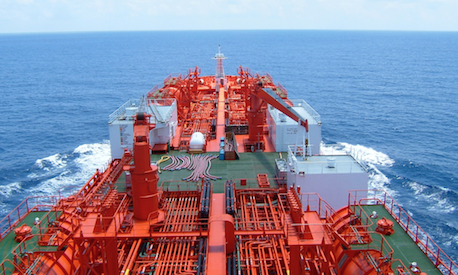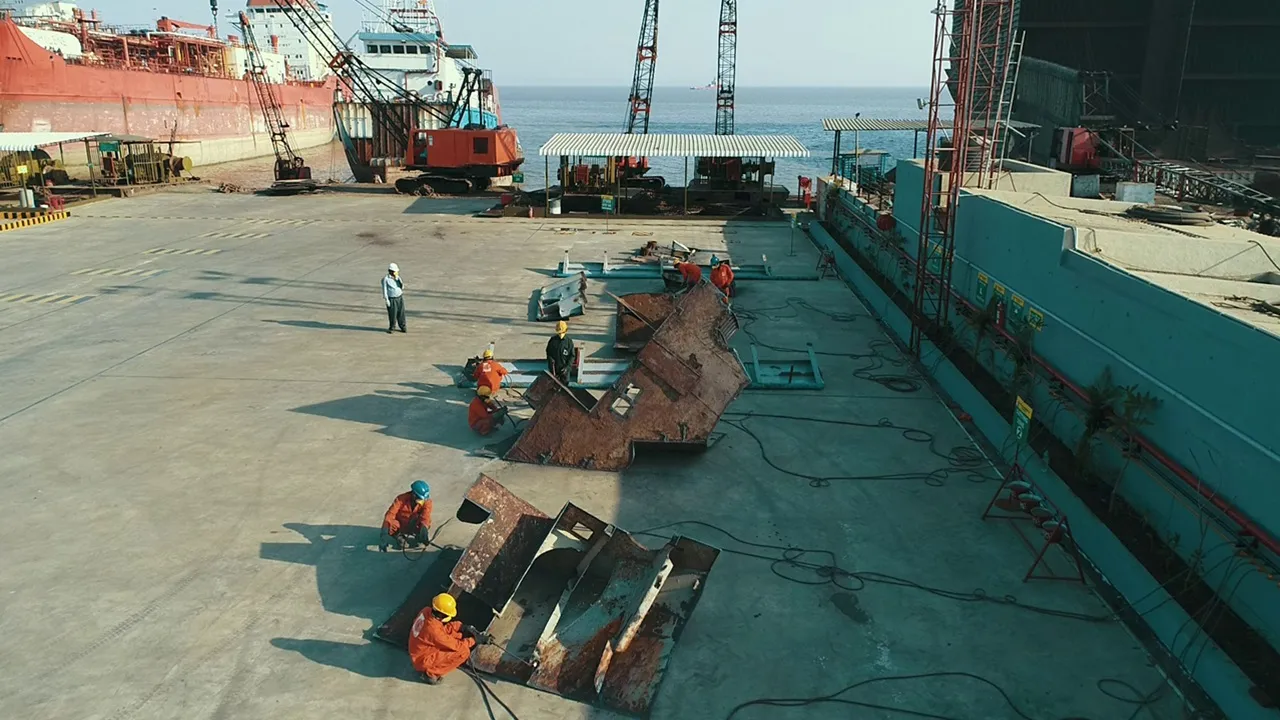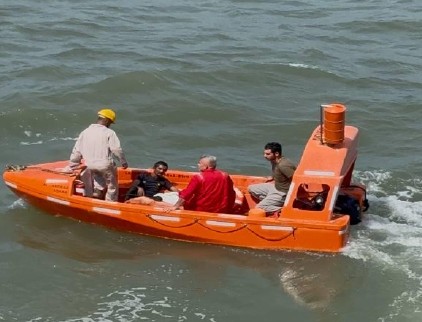Rusting Glory: Can India’s Alang Ride the Coming Wave of Global Ship Recycling?
Alang Waits. The World Moves On.
On the salt-laced shores of Gujarat’s Saurashtra coast lies Alang — once the throbbing heart of the global shipbreaking industry. A place where the world’s largest seafaring giants came to die, only to be reborn as steel for India’s growing cities. Just over a decade ago, in 2011, 415 ships were pulled ashore and dismantled by hand along Alang’s 14-kilometre stretch of beach. Today, barely a hundred are expected.
The silence that has replaced the clang of steel isn’t just symbolic. It represents a broader shift in the global ship recycling landscape — one in which India, once the unchallenged leader, is now being outpaced by rivals in Bangladesh, Pakistan, and Turkey. If this trajectory continues, it may cost India not only thousands of jobs and millions in revenue, but also its moral and strategic position as a champion of environmentally responsible industrialisation.
Yet this decline isn’t inevitable. It is a pause. And if acted upon decisively, it can be reversed.
From Prow to Profit — The Changing Global Dynamics
Understanding Alang’s current crisis helps us look at the broader global forces at play. International shipping has been on an unsteady course in recent years. Geopolitical disruptions — such as the sanctions on Russia and Iran — have led to the rise of “shadow fleets” made up of aging tankers. Normally, these vessels would be scrapped, but extended profitability due to rerouted trade and higher freight rates have kept them afloat longer.
Meanwhile, attacks by Houthi rebels in the Red Sea have forced ships to detour thousands of extra miles, further stretching the useful lives of older vessels. As a result, the expected surge in shipbreaking has been deferred — but only temporarily. Experts anticipate that between 2026 and 2035, as many as 15,000 ships will need to be decommissioned. The industry is on the cusp of a boom.
However, cash buyers and shipowners — the decision-makers in where vessels are sent for dismantling — are already choosing Bangladesh or Turkey over India. The reason is simple: price.
The Price of Compliance
In the Bangladeshi port of Chattogram, ship recyclers can offer $40–$50 more per light displacement tonne (LDT) than their Indian counterparts. Pakistan’s Karachi and Turkey’s Aliaga are also attracting more business. India, in contrast, despite its superior environmental standards, is being priced out of the market.
The irony is bitter. Indian shipyards — especially at Alang — have invested heavily in upgrading infrastructure to comply with the Hong Kong International Convention for the Safe and Environmentally Sound Recycling of Ships, as well as the European Union Ship Recycling Regulation (EU-SRR). These certifications demand stringent safety, environmental, and labour standards.
Bangladesh, by contrast, continues to use the older method of beaching — grounding ships on the shore at high tide and cutting them directly on the beach. While cost-effective, this method allows pollutants like oil and heavy metals to leach into the sea, a practice frowned upon internationally. And yet, it wins the contracts.
India’s Own Roadblocks
Even within India, progress is stalling due to bureaucratic inertia and policy bottlenecks.
One of the largest issues is the lack of standardised yard sizes in Alang. Unlike Turkey’s Aliaga, where yards are uniformly built and capable of handling larger vessels efficiently, Alang’s fragmented layout hampers productivity. In 2022, the Gujarat Maritime Board announced 28 new, standardised plots as part of a modernisation plan. Two years later, tenders have yet to be issued. No plots have been auctioned. The plan remains a file gathering dust.
Then there’s the issue of steel certification. Since 2012, the Bureau of Indian Standards (BIS) has refused to certify ship-recycled steel for use in formal construction. Despite tests proving the steel meets all strength and safety norms, the lack of BIS certification forces recyclers to offload Cold Twisted Deformed (CTD) bars in informal markets — a low-margin sector. This excludes them from the more profitable Thermo-Mechanically Treated (TMT) segment, which could be a vital source of reinvestment capital.
Adding to the woes is a bottleneck in hazardous waste management. Alang has only one licensed facility — run by Gujarat Enviro Protection & Infrastructure Ltd (GEPIL). It’s already overburdened. A proposal to double capacity has been sitting with regulators since 2021, its approval bogged down in procedural delays. For shipyards seeking to win contracts from EU clients, the lack of prompt waste processing makes them uncompetitive.
New Vision, Slow Execution
It’s not as if the central government hasn’t noticed. Maritime India Vision 2030, a flagship initiative of Prime Minister Narendra Modi’s administration, explicitly aims to make India the world’s top ship recycling destination. The government played a crucial role in helping bring the Hong Kong Convention into effect — set to become international law in mid-2025.
Senior officials, including those in the Prime Minister’s Office, have held consultations with industry stakeholders. Yet action on the ground remains elusive. Time-bound reforms, which require coordination between central ministries and state authorities, have lagged.
What India needs is a push — a decisive set of reforms to help reclaim its competitive edge just before the global recycling wave hits.
Four Levers for a Swift Turnaround
-
Free the Steel
BIS must allow IS-1786 certification for ship-recycled steel, based on already successful pilot trials. With proper metallurgical screening, recycled steel can be safely used in formal construction. Doing so will open the doors to the lucrative TMT market and significantly improve yard profitability.
-
Expand Waste Processing Capacity
Hazardous waste management is the backbone of compliant shipbreaking. The government should fast-track approvals for GEPIL’s expansion and encourage private investment in additional facilities. A capacity bottleneck in this area is enough to make otherwise modern yards unviable.
-
Unlock the 28 New Plots
The Gujarat Maritime Board should immediately auction the 28 new standardised plots. Even if ship supply is temporarily low, investors are ready. A transparent and time-bound process would show India’s seriousness and position Alang to capitalise on the upcoming boom.
-
Decentralise with a National Recycling Grid
India shouldn’t put all its eggs in the Alang basket. Ports like Paradip, Tuticorin, and Haldia — which already have steel and petrochemical industries — can be developed as medium-scale ship recycling hubs. This would create regional economic benefits, reduce logistical strain, and support broader national goals under the blue economy framework.
The Stakes: Not Just Economic, But Moral and Strategic
Recycling a 10,000-tonne ship in India saves about 15,000 tonnes of CO₂ emissions compared to producing new steel. Each ship employs around 250 workers for six months and recovers valuable metals like copper, aluminium, and manganese — all of which are crucial to India’s growing manufacturing sectors.
In a world pushing for decarbonisation, India’s green-compliant shipbreaking industry could become a showcase for climate leadership. It aligns perfectly with the Atmanirbhar Bharat (self-reliant India) initiative and strengthens the country’s case at international climate forums like COP30.
Moreover, winning back contracts from places like Karachi or Chattogram isn’t just an economic victory — it’s a statement of industrial sovereignty, achieved not through competition with weapons, but through ethical, efficient industry.
A Coast That Still Breathes Industry
Despite the slowdown, the human rhythm of Alang hasn’t entirely faded. Walk along the tide line today and you’ll hear the familiar hiss of oxy-fuel torches, the low rumble of cranes, and the sea breeze laced with both diesel and chai.
The skill, muscle, and mindset are still here. What’s missing is certainty — in steel buyers, in waste disposal, and most of all, in timely government action.
India’s Pivot Moments
India has surprised the world with its agility before. It built UPI, the world’s most successful digital payment platform, in under three years. It led one of the fastest COVID-19 vaccine rollouts. In both cases, the key was political will, clear policy, and coordinated execution.
Shipbreaking requires far less public investment, yet promises disproportionately high returns in jobs, environmental benefits, and industrial credibility.
But the clock is ticking. The global surge in ship decommissioning will begin in earnest by 2026. If India waits until then, it will be too late.
Conclusion: A Window That Must Be Flung Open
Alang’s decline is not irreversible. It is a test of policy agility, of industrial vision, and of the ability to align economic growth with environmental responsibility.
With the right interventions — a few regulatory tweaks, some long-pending clearances, and a firm push toward modernisation — India can re-anchor itself as the world’s preferred destination for ship recycling. Cleaner, safer, and more profitable than ever before.
The ships are coming. The only question is: will they land on India’s shores?
Author: shipping inbox
shipping and maritime related web portal








